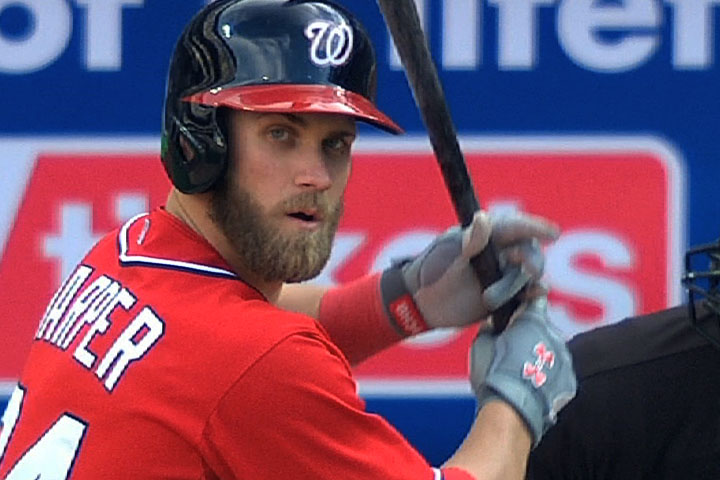
http://mlb.mlb.com/video/play.jsp?topic_id=11493214&content_id=26445279
He might only be 20 years old, but it’s worth emulating Bryce Harper’s swing, approach, and overall game right now.
He took two pitches yard yesterday against the Mets, hitting them out of the deep dimensions of Citi Field with ease. Along the way, he did so many things well that I’m saying you shouldn’t just emulate his swing, you should emulate everything. Some things he did in just the two homerun video highlights:
1. He watched both pitches deep into the zone. Notice Harper’s eyes lock on the ball during release, and where his focus is at contact. Hitting the ball squarely is easier when your focus remains squarely on the ball up until contact.
2. Harper is trying to destroy the ball. These swings are the type of swings you need to be taking in hitter’s counts (or early in the count). If you aren’t confident enough with your swing to take them aggressively, get on the tee and work on drills until you do.
3. Notice where Harper’s stride leg lands vs. the right handed pitcher on the first homerun, as opposed to where it lands vs. the lefty on the second homerun.
There is a very slight difference – Harper opens his front side a bit more vs. the lefty, allowing his front foot to gently drift towards “the bucket”. Vs. a righty, Harper’s stride leg lands more towards home plate, or slightly “diving” as it’s termed. This is a very advanced hitter, and this is a very subtle move, but if you can replicate this, do so. Right handed fastballs tail towards right handed hitters, and left handed fastballs tail towards left handed hitters. To maximize your chances of hitting “hitter’s pitches” with authority, your stride should ever so slightly “follow” the expected path of the fastball so that your in best position to open up quick enough on a ball running inside, as well as be “on the ball” long enough for a fastball that moves away from you.
4. This is a screenshot of Harper moments before the pitch is delivered on his second homerun.
What is Harper looking at? Is he distracted by someone in the stands? No.
Harper is checking the positioning of the 3rd baseman (and probably also the shortstop/left fielder) !
This is probably the best power hitter in the National League, and he is checking to see if he’s able to easily bunt for a base hit. Why?
It’s a tie game.
He’s facing a left handed pitcher.
He’s leading off the inning.
He’s fast enough to get on base with a good bunt.
The lesson here is to be a complete baseball player, not just a “type” of player. Try to do all of the fundamental things a good baseball player should do in any situation.
Do you hit for power? Great, learn to bunt for hits and do so when it can help the team.
Are you a fast contact hitter? Great, learn to drive the baseball with authority, and hit a few gaps occasionally.
There’s more Harper does well (excellent hitting fundamentals, runs hard out of the box, etc.), but I wanted to point out these things because when we talk about being a great hitter, or great player, at the varsity level and beyond, it’s the type of stuff in this post that you’ll want to be incorporating into your game.



